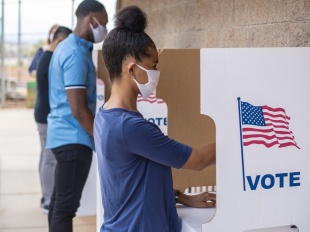New Data Tool Shows How Neighborhoods Matter for Equity and Childhood Opportunity
We know that where we live impacts how long and how well we live. The neighborhoods we grow up in influence our health, educational outcomes, and even life expectancy. In January, Brandeis University released a new, comprehensive data tool, the Child Opportunity Index (COI) 2.0, that helps us to better understand the opportunities available to children in every neighborhood in the United States.
An updated version of its 2014 predecessor (the Child Opportunity Index), the COI 2.0 is the first national measure of child opportunity, covering all 72,000 U.S. neighborhoods at the census-tract level. It quantifies, maps, and compares opportunity by looking at neighborhood conditions—such as proximity to and enrollment in early care and education centers, high school graduation rates, high-skill employment, health insurance coverage, housing vacancy rates, and poverty levels—that matter for children. The index’s 29 indicators, in three areas—education, health and environment, and social and economic—compare levels of neighborhood opportunity to explore if children have equal access to opportunities for a healthy future and are broken down by race and ethnicity. The COI 2.0 ranks all neighborhoods in the U.S. by level of child opportunity, from very low to very high, and analyzes patterns of child opportunity for the 100 largest U.S. metropolitan areas—where two-thirds of children live.
Albany, New York, is one of these 100 metropolitan areas that is already using the COI to identify and address neighborhood challenges that affect their children’s health. After the city looked at data from the 2014 version of the COI it became clear that too many Black children didn’t have access to well-kept, safe, stimulating places to play. Jonathan P. Jones, Albany’s commissioner for recreation, youth, and workforce services, shared the findings with Mayor Kathy Sheehan. Together, they developed a five-year capital improvement plan to revitalize Albany’s highest use and most in-need parks to expand access for more of the city’s kids, and especially among the city’s Black children. Now, four years into implementing the $2 million plan, Jones and his team have revitalized 13 parks and playgrounds across the city. All of the renovated playgrounds are compliant with the Americans with Disabilities Act, and six playgrounds include fitness equipment designed for adults, so parents can also exercise while their children play.
Like the annual County Health Rankings, COI 2.0’s local-level data can help other communities like Albany inform efforts to improve access to opportunities so that children can live healthier lives.
To learn more about the COI 2.0 and to see how your metro area ranks, visit diversitydatakids.org.

